Self-service digital kiosks are rapidly entering different market sectors, in particular food service and retail. However, there’s a less-often discussed type of interactive kiosk that is also gaining steam, and that’s the bill-payment or financial services kiosk. It’s understandable that bill payment kiosks may not be getting the same amount of recognition that other kiosks often do; they certainly don’t offer the same opportunities for fun or innovative integrations that, say, a Wendy’s ordering kiosk or an automated Best Buy vending machine might. What benefits bill pay kiosks do offer, though, is a solution to a need that is truly evergreen, one that is both desirable to consumers and profitable for those who choose to install them.

Financial Services Kiosks: Product Offerings
Before making a decision to install a self-service bill pay or financial services kiosk, the most important thing to do is to identify exactly what types of products you want to offer. Are you a utility company and would like to give customers another option to make last-minute payments? Are you a university that wants to allow students to make tuition payments on campus? Or are you a retailer that wants to make it simpler for visitors to purchase, reload or check the balance of gift cards in-store? Each of these scenarios requires different software, hardware and environmental considerations when designing, manufacturing and deploying the related interactive kiosk.
Utility Company Bill Payment Kiosks
The first potential project listed above, the utility company, is probably the simplest in some ways. It will likely only provide a few options for its use, such as basic bill payment or checking an account balance. However, because this type of bill pay kiosk is going to deal in cash payments, much more so than other kiosks might, it also requires an incredible amount of security built into it in order to detect fraudulent currency (much like an ATM might), as well as the ability to dispense exact change if necessary.
Payment Kiosks for Universities
The second type of kiosk can be both stand-alone, or part of a more complex self-service system. Universities have actually been amazingly progressive with their use of interactive kiosks on their campuses, using them to do everything from reload “campus cash” cards to pay parking fines and find directions around town. It stands to reason, then, that these kiosks may require a broad number of different integrations, from receipt and ticket printers, to cash intake slots, to dual monitors that allow two different sets of information to be displayed at once.
Retail Financial Services Kiosks
Our final example is the retail financial service kiosk. These, too, can, cover a broad range of opportunities for companies to interact with customers. One of the primary uses is to allow visitors to purchase and reload gift cards, which means cash intake slots and a card dispensing system would both be necessary, as would a receipt printer. However, retailers are now using the same kiosks to also allow customers to apply for store-branded credit cards, or even apply for jobs. This means integrating a real keyboard — instead of just a keyboard on the touchscreen — may be optimal for encouraging the completion of either of these tasks. They are also combined with store information and directories, and even bridal or baby registries. Even Bitcoin and other cryptocurrency vendors are getting into the financial services kiosk game, with ATM-style machines popping up everywhere from gas stations to grocery stores.
It’s clear that there is strong consumer interest in self-service kiosks, and now is the time to parlay this enthusiasm into a healthier bottom line for your business. And while there are clearly challenges to designing and deploying a new bill payment or financial services kiosk program, the process does not need to be as difficult or complicated as it may first seem. The key to success is partnering with an experienced, vertically integrated manufacturer like RedyRef. Contact us today at (800) 628-3603 today or request a quote online and we’ll be with you every step of the way to ensure that your kiosk meets every one of your business’ unique needs.

